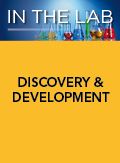Advancing Cell Therapy for Diabetes
Pharmaceutical Technology's In the Lab eNewsletter
Harvard University researchers used single-cell sequencing to identify a protein expressed uniquely by insulin-producing beta cells created from stem cells in the laboratory.
A team of researchers led by Harvard University scientists has improved the laboratory process of converting stem cells into insulin-producing beta cells using biological and physical separation methods to enrich the proportion of beta cells in a sample. Their findings, published on May 8, 2019 in the journal Nature, may be used to improve beta cell transplants for patients with Type 1 diabetes.
In October 2014, a lab headed by Douglas Melton, co-director of the Harvard Stem Cell Institute and Xander University professor of stem cell and regenerative biology, showed that stem cells could be converted to functional beta cells, taking a step toward giving patients their own source of insulin. In that initial process, beta cells made up 30% of the final cell mixture.
“To improve from 30%, we needed to really understand the other 70% of the resulting cells,” said Adrian Veres, a graduate student in the Melton lab and lead author of the current study, in a May 8, 2019 university press release. “Until recently, we couldn’t take a sample of our cells and ask what cell types were in there. Now, with the revolution in single-cell sequencing, we can go from nothing to the full list.”
In the most recent study, the team applied single-cell sequencing and molecular biology to describe the kinds of cells they were able to make from stem cells. “The beginning of manipulation is to always know what you’re working with,” said Melton in the release.
Harvard states that all cells contain the same set of genes, but cell types differ depending on which genes are active or expressed. The researchers used single-cell sequencing to identify the full catalog of genes expressed in tens of thousands of individual cells. Then they grouped the cells based on their expression patterns. Some of the cells had gene-expression patterns similar to cells that produce hormones in the human pancreas: glucagon-producing alpha cells and insulin-producing beta cells. Unexpectedly, the researchers also identified a new type of cell that makes the neurotransmitter serotonin.
The team also found a protein that was expressed only on the beta cells, which they could use as a biological “hook” to fish beta cells out of the mix, according to Harvard. Collaborating scientists at Semma Therapeutics, a biotechnology company focused on using stem cells for regenerative therapies, developed a second method for enriching beta cells-physically separating all the cells in the mixture, then letting them cluster back together. According to the university, that clustering enriched the number of beta cells. This method was based on the hypothesis that hormone-producing cells are more attracted to one another than to cells that do not produce hormones. Together, the two methods increased the purity of beta cells in a sample of converted stem cells from 30% to 80%.
“As we work toward putting stem cell-derived beta cells into patients, a purer mixture means that we can use a smaller, less-invasive device to deliver the same amount of functional cells,” said Felicia Pagliuca, vice president of cell biology research and development at Semma Therapeutics, in the release.
The ability to control the percentage of beta cells in the mixture is the key finding in this study, as stated by Harvard. Now, the researchers can focus on discovering the optimal mixture of cell types.
“The big question for us right now is whether 80%beta cells is what we want,” said Veres in the press release. “Maybe you need more of the other cell types to help regulate the beta cells, so that they function correctly. We’re going to find out how the cell types interact with each other.”
Source: Harvard University

Drug Solutions Podcast: A Closer Look at mRNA in Oncology and Vaccines
April 30th 2024In this episode fo the Drug Solutions Podcast, etherna’s vice-president of Technology and Innovation, Stefaan De Koker, discusses the merits and challenges of using mRNA as the foundation for therapeutics in oncology as well as for vaccines.
Pharmaceutical Tariffs Are Imminent: How Industry is Bracing for Impact
April 16th 2025On April 14, 2025, the Trump Administration launched a national security-driven investigation into pharmaceuticals, a move that will likely result in tariffs being placed on pharmaceutical drugs, ingredients, and other components that are imported from outside of the United States.